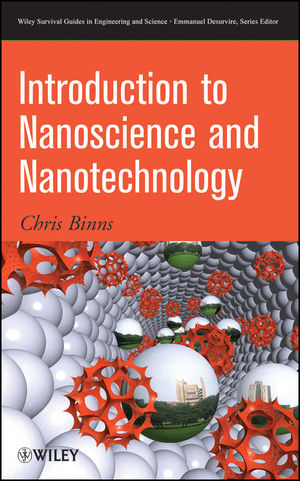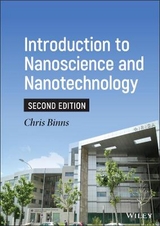
Introduction to Nanoscience and Nanotechnology
Wiley-Blackwell (an imprint of John Wiley & Sons Ltd) (Verlag)
978-0-471-77647-5 (ISBN)
- Titel erscheint in neuer Auflage
- Artikel merken
CHRIS BINNS, PhD, is Professor of Nanoscience in the Department of Physics and Astronomy at the University of Leicester, United Kingdom. He spent two years working at Synchrotron Radiation Sources (SSRL, Stanford and NSLS, Brookhaven) in the USA. Professor Binns then obtained a permanent academic post at the University of Leicester and continued synchrotron radiation experiments. In the last decade his research has focused on magnetic nanoparticles, and at present is moving into the new areas of biomedical applications of nanoparticles and in Casimir force measurements using scanning probe microscopes.
Preface. Acknowledgments. Nanotechnology Time Line. Introduction. 0.1 Incremental Nanotechnology. 0.2 Evolutionary Nanotechnology. 0.3 Radical Nanotechnology. 0.4 Bottom-Up/Top-Down Nanotechnology. References. 1 Size Matters. 1.1 The Fundamental Importance of Size. 1.2 The Magnetic Behavior of Nanoparticles. 1.3 The Mechanical Properties of Nanostructured Materials. 1.4 The Chemical Properties of Nanoparticles. 1.5 Nanoparticles Interacting with Living Systems. Problems. References. 2 Nanoparticles Everywhere. 2.1 Nanoparticles in the Atmosphere. 2.2 Atmospheric Nanoparticles and Health. 2.3 Nanoparticles and Climate. 2.4 Marine Aerosol. 2.5 Nanoparticles in Space. Problems. References. 3 Carbon Nanostructures: Bucky Balls and Nanotubes. 3.1 Why Carbon? 3.2 Discovery of the First Fullerene - C60. 3.3 Structural Symmetry of the Closed Fullerenes. 3.4 Smaller Fullerenes and "Shrink-Wrapping" Atoms. 3.5 Larger Fullerenes. 3.6 Electronic Properties of Individual Fullerenes. 3.7 Materials Produced by Assembling Fullerenes (Fullerites and Fullerides). 3.8 Discovery of Carbon Nanotubes. 3.9 Structure of SWNTs. 3.10 Electronic Properties of SWNTs. 3.11 Electronic Transport in Carbon Nanotubes. 3.12 Mechanical Properties of Nanotubes. 3.13 Thermal Conductivity of Nanotubes. 3.14 Carbon Nanohorns. 3.15 Carbon Nanobuds and Pea Pods. Problems. References. 4 The Nanotechnology Toolkit. 4.1 Making Nanostructures Using Bottom-up Methods. 4.2 Making Nanostructures Using Top-Down Methods. 4.3 Combining Bottom-up and Top-Down Nanostructures. 4.4 Imaging, Probing and Manipulating Nanostructures. Problems. References. 5 Single-Nanoparticles Devices. 5.1 Data Storage on Magnetic Nanoparticles. 5.2 Quantum Dots. 5.3 Nanoparticles as Transistors. 5.4 Carbon Nanoelectronics. Problems. References. 6 Magic Beacons and Magic Bullets: The Medical Applications of Functional Nanoparticles. 6.1 Nanoparticles Interacting with Living Organisms. 6.2 Treatment of Tumours by Hyperthermia. 6.3 Medical Diagnosis and "Theranostics" Using Nanomaterials. Problems. References. 7 Radical Nanotechnology. 7.1 Locomotion for Nanobots and Nanofactories. 7.2 On-Board Processing for Nanomachines. 7.3 Medical Nanobots. 7.4 Molecular Assembly. References. 8 Prodding the Cosmic Fabric. 8.1 Zero-Point Energy of Space. 8.2 The Casimir Force. 8.3 The Casimir Force in Nanomachines. References. Glossary. Index.
| Reihe/Serie | Wiley Survival Guides in Engineering and Science ; 1 |
|---|---|
| Verlagsort | Chichester |
| Sprache | englisch |
| Maße | 162 x 234 mm |
| Gewicht | 636 g |
| Themenwelt | Technik ► Elektrotechnik / Energietechnik |
| ISBN-10 | 0-471-77647-5 / 0471776475 |
| ISBN-13 | 978-0-471-77647-5 / 9780471776475 |
| Zustand | Neuware |
| Haben Sie eine Frage zum Produkt? |
aus dem Bereich



